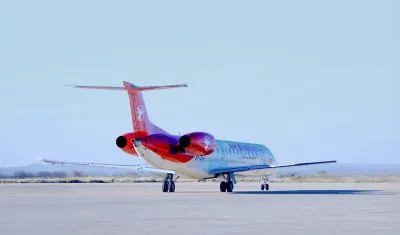It now seems certain that a new development bank, operated by the BRICS countries, will emerge in the near future. Its impact on the developing world could be enormous – freeing it from the Western-dominated financial institutions and stimulating accelerated growth in emerging markets. Tom Nevin has the details.
The formation of a joint development bank operated by the BRICS countries is almost certain to take place at the March 2013 South Africa-hosted annual conference of the five-nation emerging-nation bloc.
The possibility of a purely emerging-nation development institution was raised at last year’s gathering when the member nations – Brazil, Russia, India, China and South Africa – examined early proposals to reinforce their alliance with the establishment of a financial structure dedicated to regional development. “The bank would work to mobilise resources for infrastructure and sustainable development projects in BRICS and other emerging economies and developing countries,” noted a statement after the Delhi summit. As good as their word, it now seems that all that remains to bring the new bank to life are the signatures of the BRICS countries’ leaders on the founding documents.
The BRICS Development Bank, as it will be known, will have an initial corpus and equity holding of $50bn.
The arrangement, to be ratified in Durban, calls for member countries to each contribute $10bn toward the foundation of the bank. The fund will enable the leveraged mobilisation of resources for infrastructure and sustainable development projects. After five years of its operation, member countries will consider injecting a further $10bn each towards the bank’s expansion.
A roadmap for the institution is being finalised and is expected to focus on financing both social sector projects and the infrastructural development of roads, ports, airports, railways and rural economic installation.
The bank is also seen as “a declaration of the independence of the emerging community of nations” and a signal of its intention to open new ways of funding and underwriting development in emerging economies. It intends being an alternative to the International Monetary Fund (IMF) and wants to become a strong voice in the lobby for reforms of existing international financial institutions (IFIs).
It also wants to be a lending instrument for poor nations with the intention of helping them strengthen economically by funding critical infrastructure and accelerated development. It maintains that by helping weaker nations pack on economic muscle, the family of developing nations could sooner rather than later become an important global trade and investment market in its own right.
With this aim in mind, it could also provide financial support to countries suffering from financial instability, a function that has so far been largely reserved for the IMF. While a basic function of the proposed bank would be to provide finance for joint BRICS projects, its proponents also see a massive and naturally wealthy underdeveloped region ready for development and rapid growth.
Space for new institution
The BRICS nations say they are ready to underwrite agreements that would help banks extend credit to other members in local currencies as a means of decreasing reliance on the US dollar. Using national currencies might provide greater macroeconomic flexibility and create national reserves.
BRICS managers are happy with the progress the project has made so far. The board of governors, management and all key functions will be sourced from member countries.
One prickly issue awaiting resolution pits an economic heavyweight against a minnow in the tussle to see which country will host the bank. India and South Africa have emerged as serious contenders, although the other member states have not been written off. Also to be resolved is the issue of if and how non-members will be allowed to access the bank. “We will consider the option of widening the bank’s mandate, constitution and reach in the medium term, say after 10 years of its operation,” says an official.
The bank’s stated intention is to work closely with, supplement and complement the efforts of other multilateral and regional development banks and institutions. “It does not seek to either displace AfDB, the World Bank or the International Monetary Fund. Instead, it will work with these institutions to push for development and prosperity in these five emerging economies”, it said in a statement.
“I have to say that all five countries are very enthusiastic about the importance of the new development bank,” says Kaushik Basu, Chief Economic Advisor to the Indian Finance Ministry. “Even from the World Bank and the IMF we have received good vibrations.” Basu says institutions recognise “that today’s global economy is so large that another new development bank does not really take away from any existing bank, there is space for much more.”
The BRICS development bank is seen as a first step towards larger economic, trade and investment cooperation.
Windsor Chan, deputy general manager of China Construction Bank, Johannesburg, is upbeat. “The development bank could provide another finance choice for the non-Western countries without the political agenda hindering their economic development,” he maintains.
Nicolas Véron, a senior fellow at Brussels-based economics think-tank, Bruegel, was not so sure. He thinks it’s unclear whether the BRICS is a real proposal, or sabre rattling at the West. “Effectively,” he says, “the reference of a new development bank followed a scathing statement against the management of the financial institutions. One may look at it as a way to ask for more balanced governance of the Bretton Woods bodies, or the BRICS countries will create their own system outside the World Bank.”
The South African attitude, however, is all positive. Maite Nkoana-Mashabane, Minister of International Relations and Cooperation, says South Africa will shoulder its responsibility to ensure the bank’s establishment. He foresees it being able to help fund South Africa’s state-led infrastructure drive. It could also potentially double South Africa’s trade with other BRICS members to $500m by 2015, he believes.
Want to continue reading? Subscribe today.
You've read all your free articles for this month! Subscribe now to enjoy full access to our content.
Digital Monthly
£8.00 / month
Receive full unlimited access to our articles, opinions, podcasts and more.
Digital Yearly
£70.00 / year
Our best value offer - save £26 and gain access to all of our digital content for an entire year!
 Sign in with Google
Sign in with Google 


